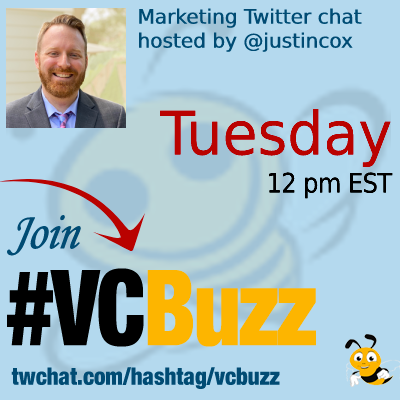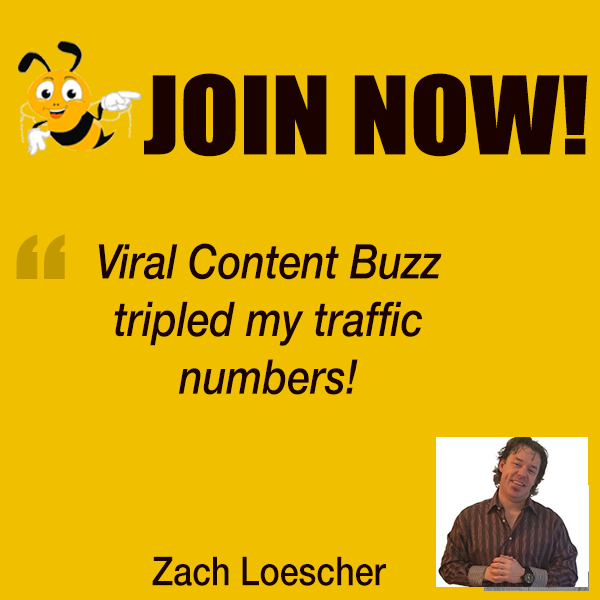
Thanks to digitalization opportunities, nonprofits around the world can build awareness and brand loyalty through creating great content.
But how to create content that resonates and reaches your target audience?
How should nonprofits utilize content to achieve their marketing goals?
Let’s discuss!
***Add #VCBuzz chats to your calendar here.
***Please sign in here to follow the chat -> twchat.com/hashtag/vcbuzz
About @justincox
Justin Cox has helped 150+ nonprofit organizations establish strategic plans and compliance procedures and is the co-founder of @WritingCoop, an international community of writers.
Questions we discussed
Q1 How did you become a digital marketer? Please share your career story!
I began working in the nonprofit sector in 2005. I worked with teenagers and was responsible for marketing to them and their parents (two very different audiences with different mediums). Back then, digital marketing options were limited.
As the internet evolved, so did the way I marketed and shared information. During that time, Twitter went from a trend at #SWSW to the juggernaut it is today. New platforms and channels developed, and the way I marketed opportunities greatly expanded.
In 2014, I co-founded @WritingCoop. Over the years, I developed branding and marketing channels that helped us become @Medium’s largest publication for writers. The publication offered a different audience to expand my digital marketing upon.
Like many people, the pandemic brought a career change. In addition to managing @WritingCoop, I began consulting with nonprofit agencies on compliance, marketing, and strategic planning. Since mid-2020, I’ve helped 150+ nonprofits navigate these waters.
Q2 How is writing for nonprofits different from writing in general?
Writing is writing. Like any business, nonprofits have messages that need sharing with the community. The audience and purpose may differ from for-profit companies, but the importance is equal (or greater).
The biggest difference is that many nonprofits feature “poverty porn” in their marketing. They use images or language that manipulate people to feel bad for others, which encourages donations. This tactic, though common, is awful and shouldn’t be used.
A2 Writing for a non-profit requires a tone of compassion that supports the overall cause.#VCBuzz
— Debi Norton (@BRAVOMedia1) April 12, 2022
Another difference is nonprofits have higher audience segmentation. Marketing something often requires different messaging for clients, the community, volunteers, and donors. Segmentation requires nonprofit marketers to constantly adjust messaging.
Otherwise, nonprofit writing is similar to for-profit marketing and writing, just with different jargon. Nonprofits develop strategic plans instead of business plans, nonprofits focus on development (fundraising) instead of sales, etc.
I think fundraising may not be too far from sales. It's not typically sales, but I am inclined to think we're still selling an idea and there is a transaction of sorts. Am I making any sense? #vcbuzz
— Zen Ameer (@Zen_Ameer) April 12, 2022
A common misconception about nonprofits is they cannot afford to invest in marketing. The reality is that, while budgets may be lower, the need is still there. Clients aren’t served and donations don’t arrive if the community doesn’t know about the nonprofit.
A2: The marketing content for nonprofits requires a lot of focus on emotion, and carefully understanding what emotion you are trying to achieve in your readers. I like when more focus is on positive emotion, like hope, caring, empathy. #vcbuzz
— Sarah Clarke (@sclarkeOville) April 12, 2022
This stands out for me: "Yeah, they are very closely aligned, and a lot of the methods and strategies apply. But the nonprofit is not a product, nor are the clients or services. Thinking in terms of products can turn the work into a commodity, which is never the goal."#vcbuzz
— Zen Ameer (@Zen_Ameer) April 12, 2022
Q3 Are there any great examples of nonprofits using writing and content marketing effectively?
Nonprofit marketing isn’t about “poverty porn” or endless donation and volunteer requests. Instead, great nonprofits market by telling a great story. People want to connect with nonprofits that clearly share their mission and impact.
Here in Orlando, @fleetfarming is a sustainability focused-nonprofit that creates private and community gardens. Their social media marketing includes a mixture of education, ways to get involved, and recipes. All these convey the organization’s story.
a3 Sometimes grassroots organizations can do a phonemical job. I'm impressed with the content and work being done by @MercyForAnimals #VCBuzz
— Debi Norton (@BRAVOMedia1) April 12, 2022
On a global scale, @WCKitchen by @chefjoseandres provides chef-prepared meals to people in crisis. Right now, they are doing incredible work in Ukraine and Poland. Their marketing focuses on the individual stories of the people they reach.
When people see a nonprofit tell a compelling story, they want to get involved. Whether by donating or volunteering, a great story motivates people to act.
Q4 Where to start? What would you recommend a nonprofit that’s just starting their content marketing strategy?
The first step any nonprofit should take is to define its mission, vision, and core values. When these are clear and compelling, they help tell the organization’s story. As I mentioned earlier, people want to connect with a great story.
Someone once told me that a nonprofit no one knows about doesn’t benefit the community. It’s true. Sharing the organization’s message is essential to serving clients and attracting donations.
A4 With both for-profit and not-for-profit – it should always start with the main GOAL and work on a strategy to meet the expectations of the target audience and be in alignment with the overall goal.#VCBuzz
— Debi Norton (@BRAVOMedia1) April 12, 2022
Thankfully, new nonprofits have many options to start marketing without spending a lot of money. The first tool is a website that conveys what, where, when, and why the nonprofit does what it does. From there, social media is a given.
Segmented newsletter lists are also important to send information to interested parties. Lists for donors, volunteers, and clients are great starting points. Also, local news outlets love human interest stories, so organizations should reach out.
A4: #vcbuzz
— Asangi (@asangi_j) April 12, 2022
Aligning messaging to mission, vision & values and ensuring tone of voice, use of words and images, the channels to be present at all reflect the core business values
As the nonprofit grows, it’s wise to invest in dedicated content marketing. Add a blog highlighting the organization’s successes while educating the community about its clients’ issues and barriers.
A4. Much like a business I would start by clearly defining your brand, goals, and strategy. Then build out the digital marketing foundations for content marketing.
— Sarah Clarke (@sclarkeOville) April 12, 2022
Get going on:
Website & blogs
Social Media
Email Marketing
SEO
Other – PR, Traditional Media, etc#vcbuzz
Ultimately, a nonprofit should take the time to create a strategic plan that encompasses operations and marketing. The organizations I highlighted before have a coordinated strategy to ensure the nonprofit’s story is told and received.
Q5 What are your favorite nonprofit marketing and writing tools?
Remember, writing is writing, so the tools are basically the same. Everything I write begins in @ulyssesapp before exporting to whatever the client prefers (Word, Google, etc.). I use @pixelmator for all of my graphics and social posts.
For new organizations looking to create a simple and easy to build website, I recommend @carrd. @flodeskinc is my go-to email marketing tool right now. All of these are pretty standard tools for all writers.
A5: My fav nonprofit marketing tools include:
— Sarah Clarke (@sclarkeOville) April 12, 2022
?Canva (for graphics)
?Google Drive (for writing in docs)
?Wordpress (for website)
?Mailerlite (for email marketing)#vcbuzz
Nonprofit writing often requires data and research to highlight the organization’s mission. I use a lot of government websites, including the @uscensusbureau and @USDOL, for detailed statistics. @pewresearch is also a frequent tool for research data.
Ultimately, marketing a nonprofit is similar to marketing anything else. The tools are all familiar. The key to writing for a nonprofit is focusing on its mission and vision. Any marketing tool is just a way to enhance and amplify that story.



